Service and support
HOT ZONE REPLACEMENT
FURNACE HEATING CHAMBER UPGRADE
Increase furnace efficiency with a complete hot zone replacement!
Hot Zone replacement is both economical and ecological.
The hot zone is the central functional component of a heat treating furnace. Its condition determines the overall performance of the heat treating process, including the energy efficiency and temperature distribution throughout the charge load, which ultimately determines the quality of the heat treating. It really is the heart of the whole process.
Heat treating furnaces are built to have a long service life. However, inadequate maintenance, improper use, or wear and tear can all shorten that service life considerably, reducing the heat treatment quality and uniformity. Once the hot zone had deteriorated significantly, a complete replacement is the only advisable course.
Replacement of the heating chamber guarantees:
- Trouble-free operation of the furnace
- Better temperature distribution
- Increased process cleanliness
- Limited heating power losses
- Better heating efficiency and safety
The knowledge, skills and experience of SECO/VACUUM’s experts will make your equipment operate more effectively and more efficiently.
SECO/VACUUM’s heat-treating expertise is unrivalled, and they have hot zone replacement down to a routine, so let SECO/VACUUM handle your next hot zone replacement for ease of installation, smooth start-up, and worry-free operation.
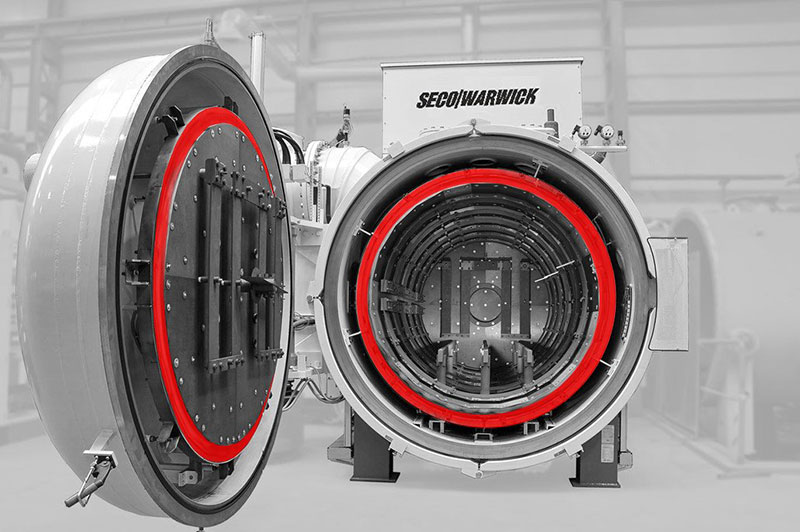 HOT ZONE
HOT ZONE
Upgrade, replacement, overhaul, repair.
We offer repairs and complete replacement of furnace Hot Zones, both for SECO/VACUUM equipment and for furnaces from any OEM. Overhauling or upgrading a furnace heating chamber not only ensures the smooth operation of the furnace but also promotes safety and savings.
HOT ZONE TYPES
SECO/VACUUM is an expert at providing replacement components and fabrications to meet your maintenance needs. Key to efficient vacuum furnace operation is a hot zone that meets advanced technical standards for optimum furnace performance.
SECO/VACUUM can provide replacement hot zones and heating elements for a wide variety of furnaces sizes and brands ranging from the smallest lab furnace to large scale capacity equipment. Configurations are available in both graphite and molybdenum. Each hot zone is produced with the highest quality materials and flawless workmanship.
VACUUM FURNACE HOT ZONE REPLACEMENT CONSIDERATIONS
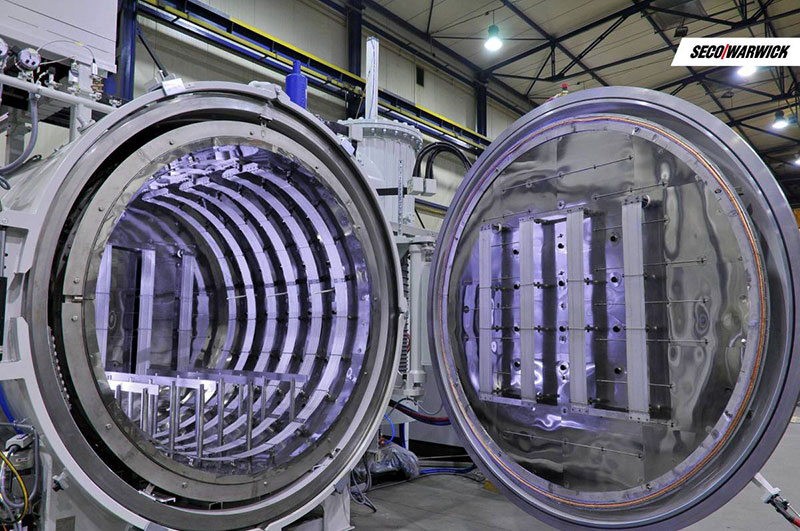
The term Hot Zone is a bit of heat treat industry shorthand. When people refer to the Hot Zone what they generally mean includes all the components that make up:
- The housing of the heating chamber together with its insulation
- Heating element supports together with the heating elements
- Heating chamber hatches operating in the cooling phase
- Process gas nozzles
- Load supports together with the insulators
Taken as a whole, these parts make up the most functional component of a vacuum heat treat furnace: the chamber. Each part must operate properly for the whole to be functional.
Consider the vacuum chamber housing. Cylindrical chambers are configured in horizontal or vertical orientation. Those with rectangular chambers are typically loaded horizontally.
Next, consider insulation. It can be quite a minefield of choices, as there is no single correct solution. Depending on the shape of the chamber, the maximum operating temperature, the required temperature distribution, and the expected oxygen purity, different solutions are possible with the use of soft and/or hard graphite insulation, including graphite foil, or solutions based on screens of stainless and molybdenum sheet. There are also mixed combinations, combining metal and ceramic insulation. The insulation acts as a thermal barrier not only affecting the loss of heat through the housing, and thus the economics of the process, but also the temperature distribution. The selected material and assembly method will also play a significant role in the rate of evacuation of the entire furnace, also known as degassing, and at least partially the maximum vacuum.
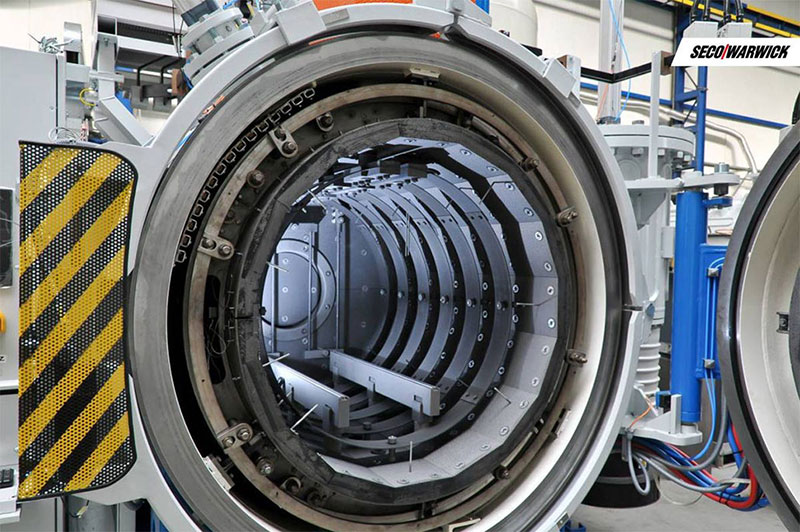 Selecting heating elements entails just as many possibilities. Choose from among tubular, flat, straight or bent graphite elements, and molybdenum heating elements. Available in either wye or delta three-phase power systems, and sometimes as single-phase systems, they must be wired to carefully to ensure that resistance is homogeneous over the entire length of all the heating elements. Incorrect installation can lead to non-uniform heat radiation, and consequently, non-uniform temperature distribution. It is also important to remember that the resistance of the entire system changes as a function of temperature, requiring the entire system to remain withing the engineering parameters of the power supply. Even once all that is accounted for, vibration and repeated heat cycling can degrade the electrical connections, creating local hot spots, overheating, and damage.
Selecting heating elements entails just as many possibilities. Choose from among tubular, flat, straight or bent graphite elements, and molybdenum heating elements. Available in either wye or delta three-phase power systems, and sometimes as single-phase systems, they must be wired to carefully to ensure that resistance is homogeneous over the entire length of all the heating elements. Incorrect installation can lead to non-uniform heat radiation, and consequently, non-uniform temperature distribution. It is also important to remember that the resistance of the entire system changes as a function of temperature, requiring the entire system to remain withing the engineering parameters of the power supply. Even once all that is accounted for, vibration and repeated heat cycling can degrade the electrical connections, creating local hot spots, overheating, and damage.
Depending on the furnace manufacturer, the shape of the hatches and the way they work can vary; many solutions are patented. Here, precise mapping is required, as hatches are one of the key elements of the cooling system and can critically affect the quenching results.
Process gasses and their proper plumbing must be accounted for as well.
Preparing new supports causes the fewest problems, though mistakes can be made here too, by not properly selecting materials, their dimensions, and the structure of insulation between the supports and the batch tray/basket.
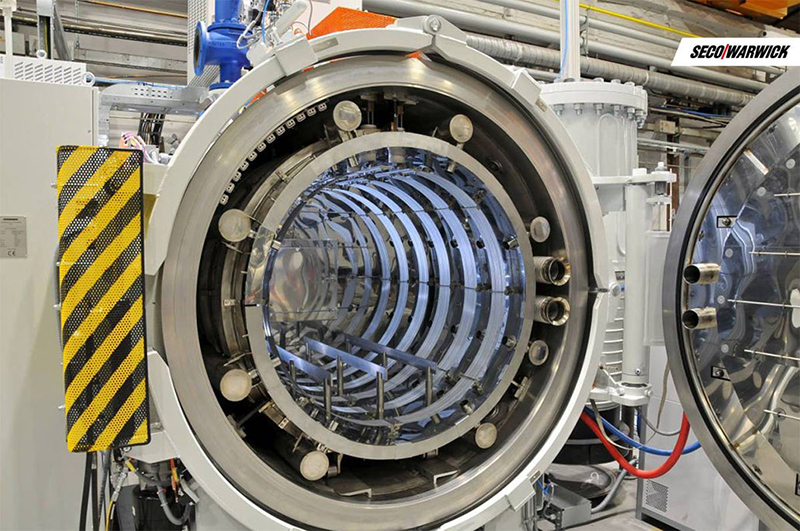 Changes in any hot zone components can also affect the performance of the entire furnace system as well:
Changes in any hot zone components can also affect the performance of the entire furnace system as well:
- Pumping time, degassing – the type of insulation materials used and the method of assembly (and, of course, the entire pumping system, which will not be discussed here)
- Uniformity of temperature distribution – the design of the heating chamber, the type of insulation materials used, the type and method of assembly of heating elements, the quality of execution
- Cooling speed – correct mapping or a new design and the quality of the hatches (and, of course, the entire cooling system, with a blower and an exchanger, which will not be discussed here)
- Heat losses – a mapping of the original design, the type of insulation materials used, and the method of their assembly
Weighing all the interdependent variables associated with hot zone replacement, it is becomes clear just how complicated hot zone replacement can be. For this reason, many manufacturers limit their services to their own line of furnaces.
SECO/VACUUM is one of the few companies willing to tackle hot zone replacement on any manufacturer’s furnace. In 2020 alone SECO/VACUUM’s Aftermarket Service Department upgraded over 20 vacuum furnace hot zones, including seven from other leading competitors.
Service/Support
SECO/VISORY Consulting Services Repairs and Upgrades Hot Zone Replacements & Rebuilds Maintenance Spare Parts
Contact:
 |
Ken Burchill Aftermarket Sales Specialist Tel: 1-814-332-8563 Mob: 1-814-795-3265 E-mail Ken |
 |
Brandon Gray Aftermarket Sales 1-814-332-8538 E-mail Brandon |
 |
Caleb Johnson Field Service Manager 1-814-573-0783 E-mail Caleb |
 |
Sam Cavasin Field Service Engineer 1-814-573-0441 E-mail Sam |


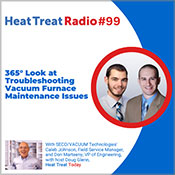 Troubleshooting Vacuum Furnace Maintenance Issues
Troubleshooting Vacuum Furnace Maintenance Issues

